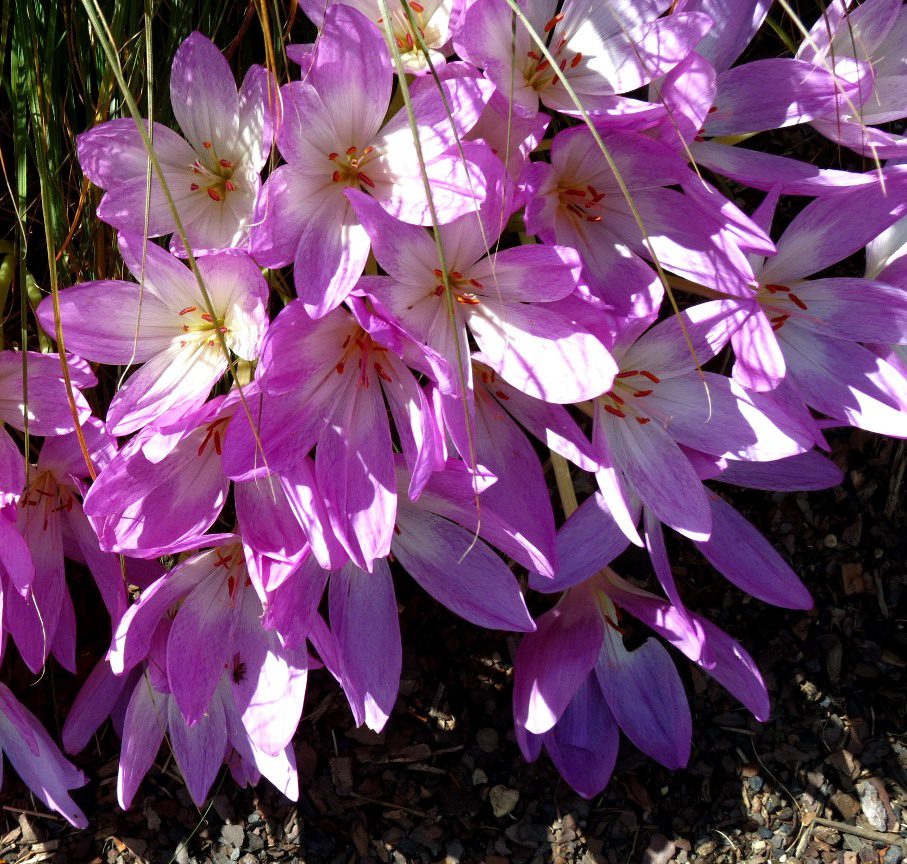
About Colchicum
Researching new plants that I may want to offer starts with studying the written word of others in articles or catalogs, but invariably has to include a field trial where I buy as many varieties as I can find (or afford) and grow them on. I tried most of the big ball-shaped alliums and quickly decided they were not for me. The fall-blooming colchicums have been a quite different story. Flower buds magically mushroom out of the ground in September and October from oddly shaped corms (there is an extension at the bottom part of the bulb called the “foot”, from which the first roots and flower tubes emerge) and mature as clusters of 4”-8” stemmed wine goblets in every shade between rosy-pink and purple (there are some white forms too). Their wide, green, Hosta-like leaves do not appear until the following spring, eventually maturing and dying down in mid-July. First-year planting will yield floral rewards in just a few weeks, provided that you can get the bulbs early enough. Late August, or early September planting is ideal. Making things somewhat more difficult is the fact that the bulbs begin pushing buds regardless of whether they’re planted or not–if they are blooming outside, they are also probably blooming anemically in their display boxes at the local garden centers. Getting there too late will make you have to wait a full year before seeing any flowers from your efforts.
We want you to have immediate success, so it’s recommended that you get your Colchicum order to us as soon as you can in July or August; certainly try to submit it before September 15th. After that, a few stocks get potted for local sales, but the rest begin getting replanted in our fields so we can observe the flowers too (necessary for quality control). We do have a number of varieties we offer at wholesale costs—call or email us for details on eligibility and availability.
Colchicums require well-drained soil and prefer sunny locations. Because it is essential to leave the foliage to the bitter end, incorporating them into herbaceous borders can be tricky, as the mass of leaves from established clumps can be quite substantial. We have successfully used them next to some of the classic late-season perennials and annuals like Asters, Japanese anemones, hardy mums, ornamental grasses, ornamental kale, etc.). The sunny spots at the bases of trees and in between shrubs display them well, and they will perform happily here provided that competition with surface roots is not an issue. As with most bulbs, if it’s hard to dig the hole where you’re trying to put them, it’s probably not a good place for them to grow. Plant the corms 6”-8” deep and 6”-8” apart.
Unfamiliar with Colchicums? You might want to try our beginner’s sampler. Check it out.
